Joseph Beuys
Works from the Nationalgalerie Collection
12 Apr 2024
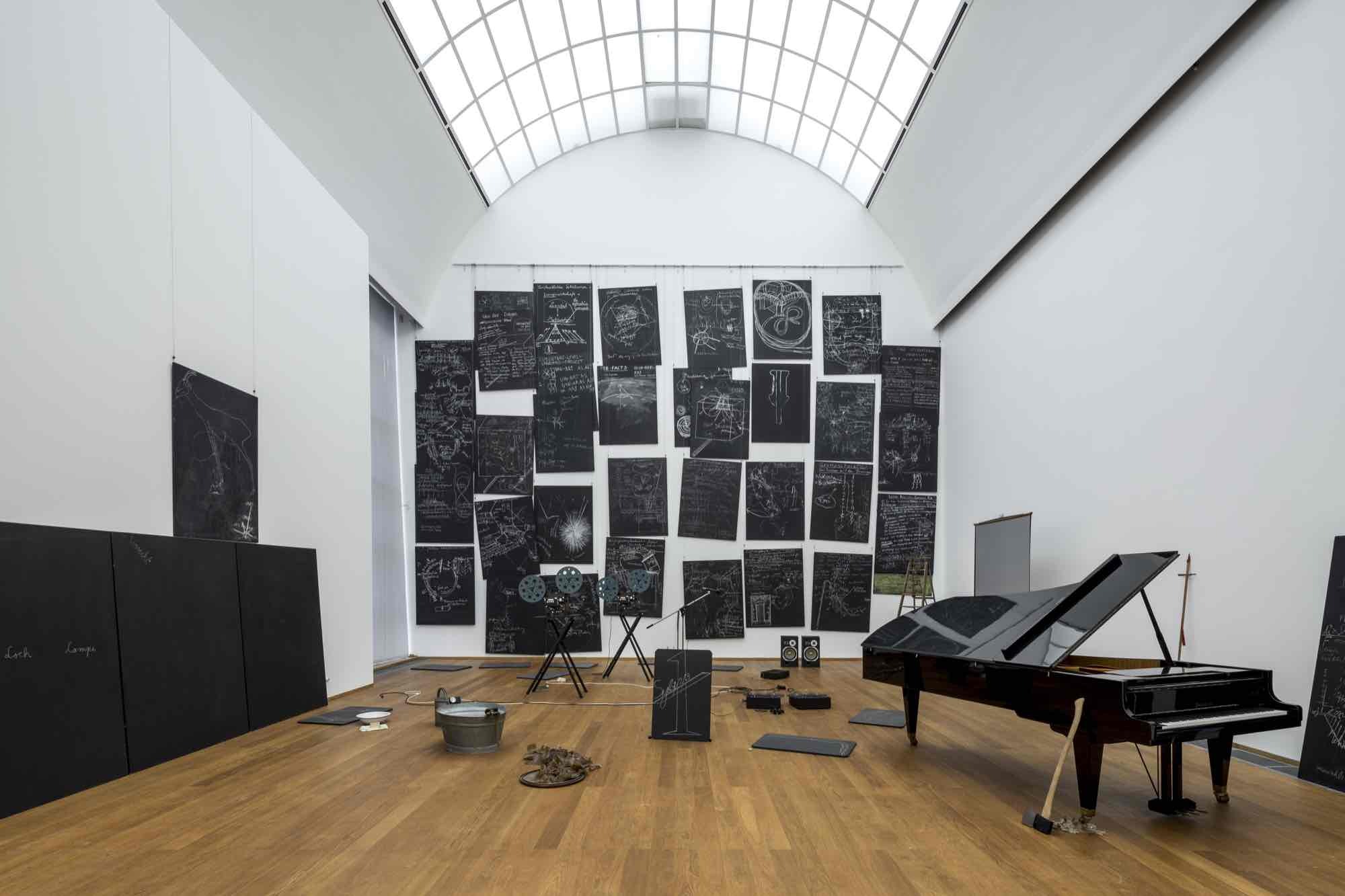
Exhibition view “Joseph Beuys. Works from the collection of the Nationalgalerie", Hamburger Bahnhof - Nationalgalerie der Aktuell, from April 12, 2024 / pictured: Joseph Beuys, Das Kapital Raum 1970–1977 (1980), wooden panels inscribed with chalk, 50 pieces, zinc tub with water, soap , towels, gelatin, electronic players and cables, wooden slats, spear, axe, knife, pebbles, grand piano, flashlights, projection screen, dimensions variable, State Museums in Berlin, National Gallery, Marx Collection (property of the Prussian Cultural Heritage Foundation), photo: Jacopo La Forgia© VG Bild-Kunst, Bonn 2024
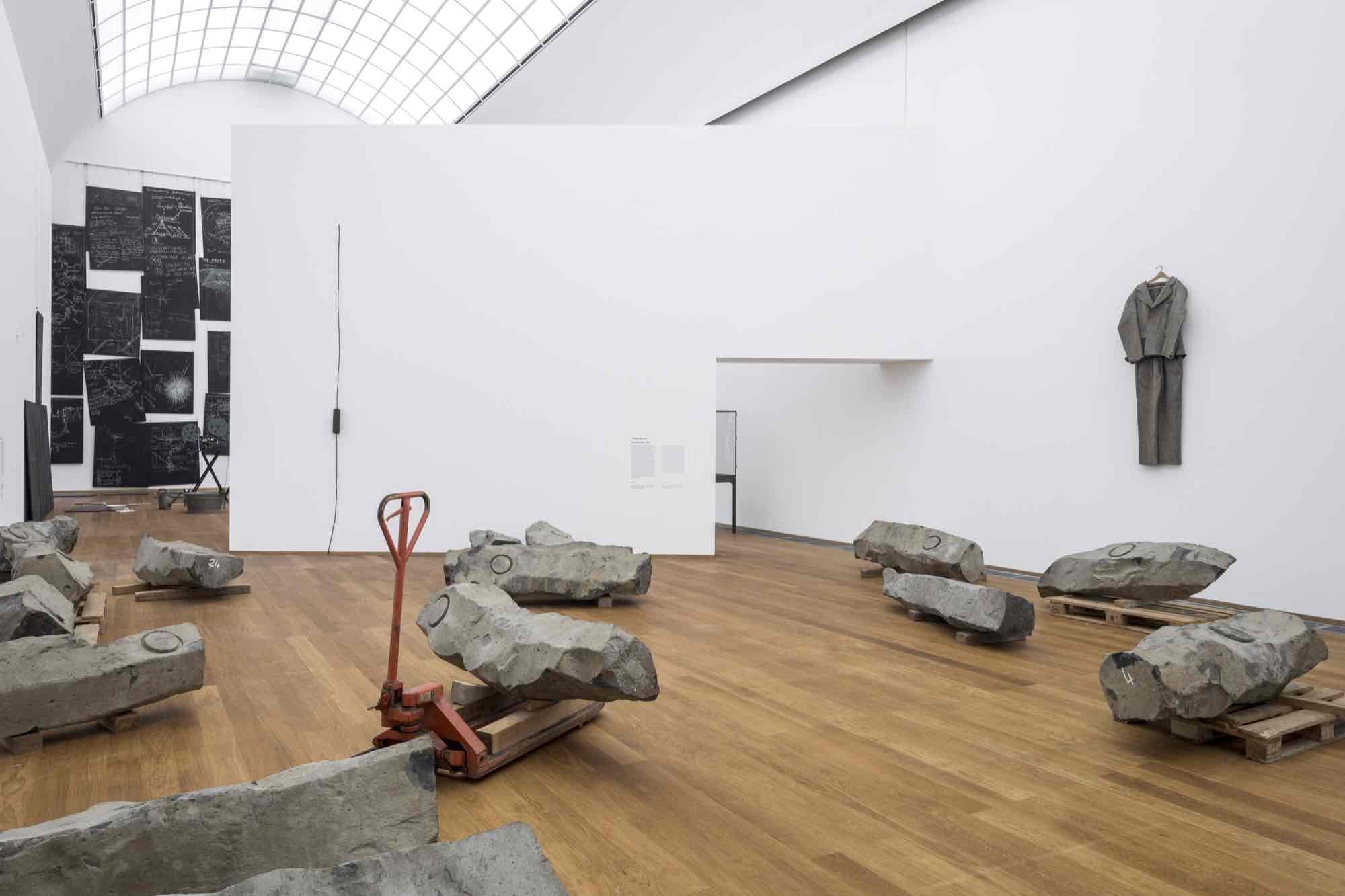
Exhibition view “Joseph Beuys. Works from the collection of the Nationalgalerie", Hamburger Bahnhof - Nationalgalerie der Aktuell, from April 12, 2024 © VG Bild-Kunst Bonn, 2024 / Nationalgalerie - Staatlichemuseums zu Berlin / Jacopo La Forgia

Exhibition view “Joseph Beuys. Works from the collection of the Nationalgalerie", Hamburger Bahnhof - Nationalgalerie der Aktuell, from April 12, 2024 © VG Bild-Kunst Bonn, 2024 / Nationalgalerie - Staatlichemuseums zu Berlin / Jacopo La Forgia
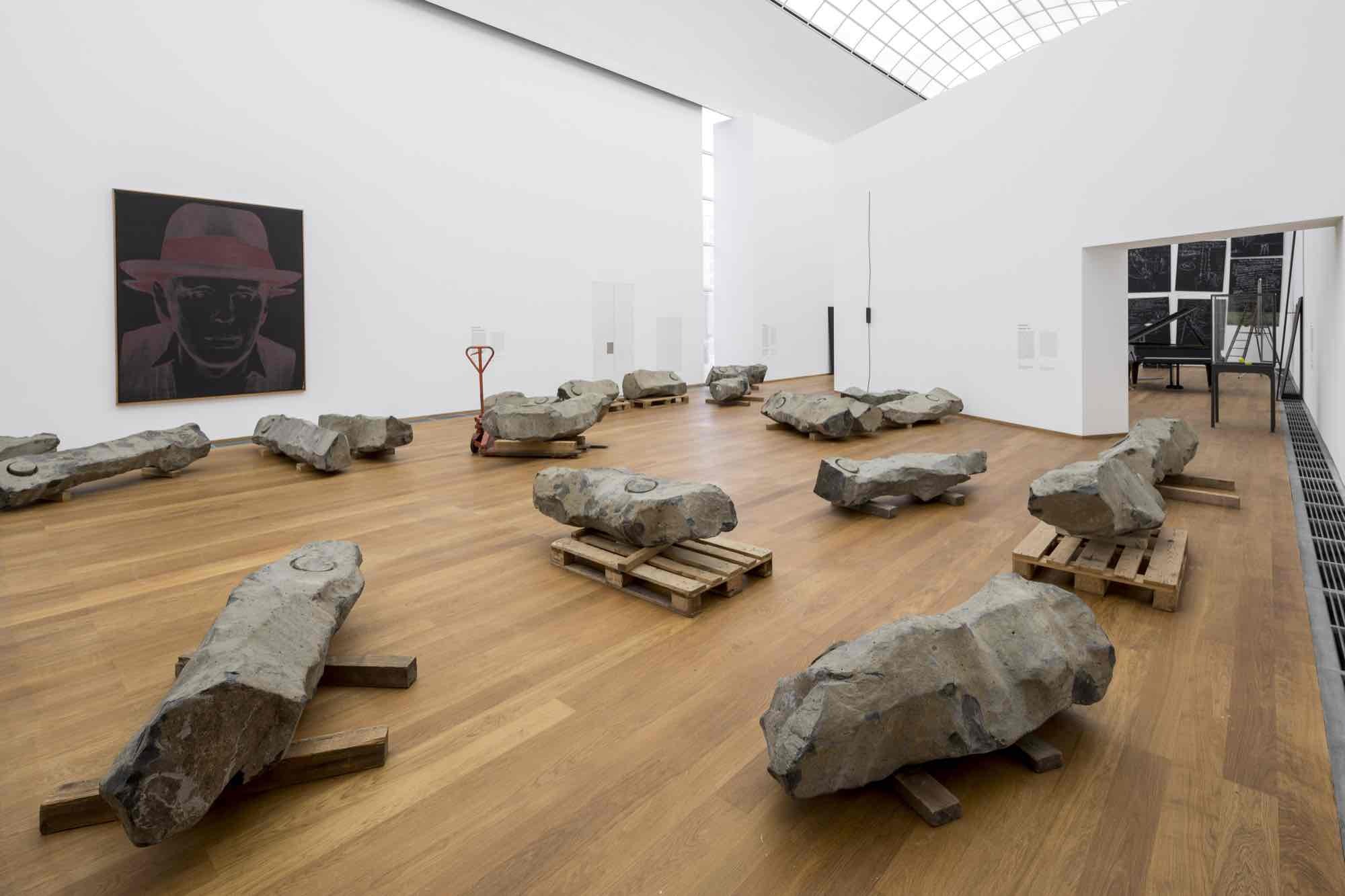
Exhibition view “Joseph Beuys. Works from the collection of the Nationalgalerie", Hamburger Bahnhof - Nationalgalerie der Aktuell, from April 12, 2024 © VG Bild-Kunst Bonn, 2024 / Nationalgalerie - Staatlichemuseums zu Berlin / Jacopo La Forgia
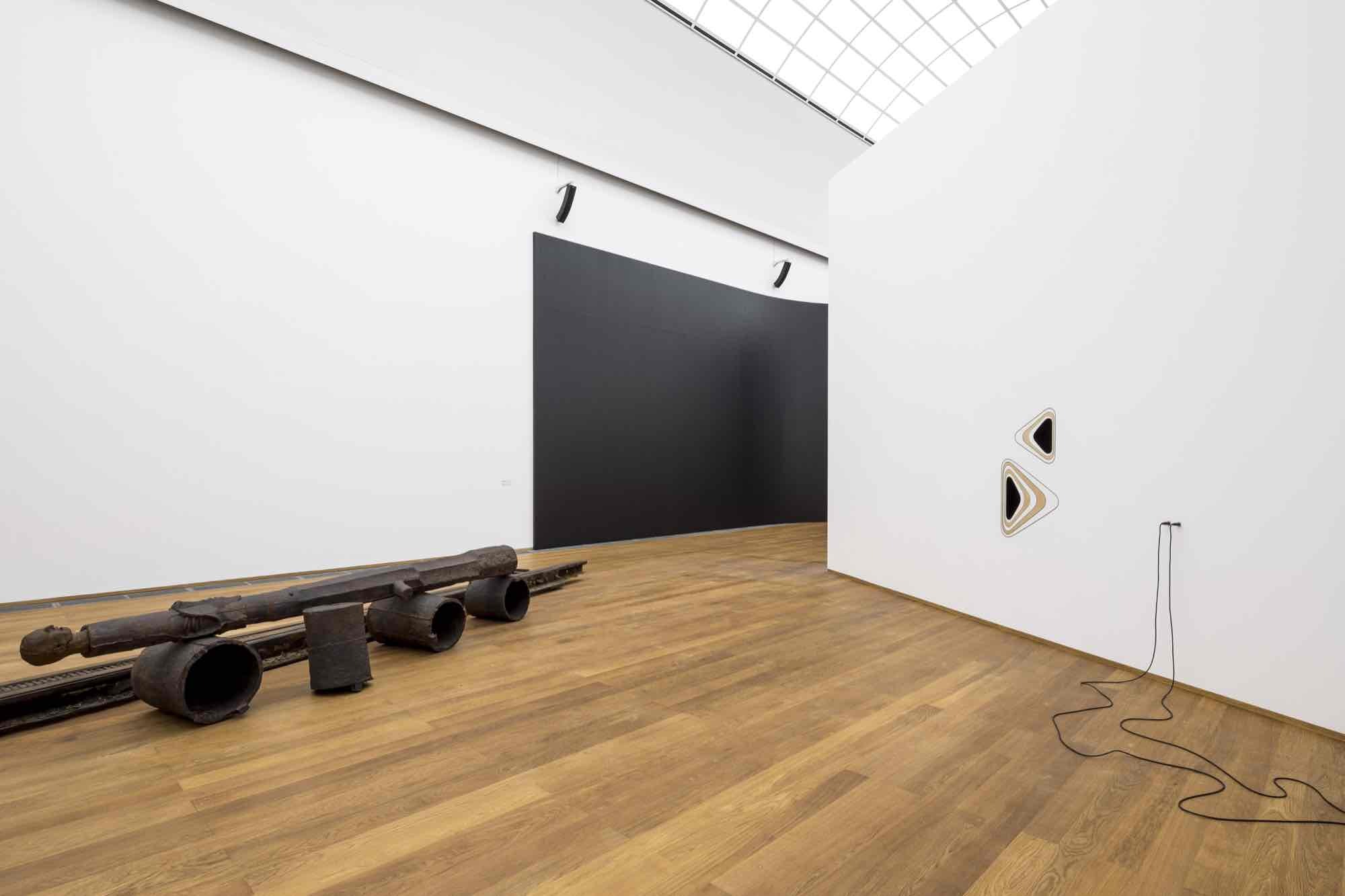
Exhibition view “Joseph Beuys. Works from the collection of the Nationalgalerie and "Naama Tsabar. Estuaries", Hamburger Bahnhof - Nationalgalerie der Aktuell, from April 12, 2024 / pictured: Joseph Beuys, tram stop. A Monument to the Future (2nd version), 1976, 5 parts made of cast iron: column, 4 cylinders; Tram rail (switch), 22 iron rods, iron crank, 29 parts, installation dimensions: 74 x 837 x 246 cm, Berlin State Museums, National Gallery, Marx Collection (property of the Prussian Cultural Heritage Foundation) © VG Bild-Kunst Bonn, 2024 / Nationalgalerie - State Museums in Berlin / Jacopo La Forgia
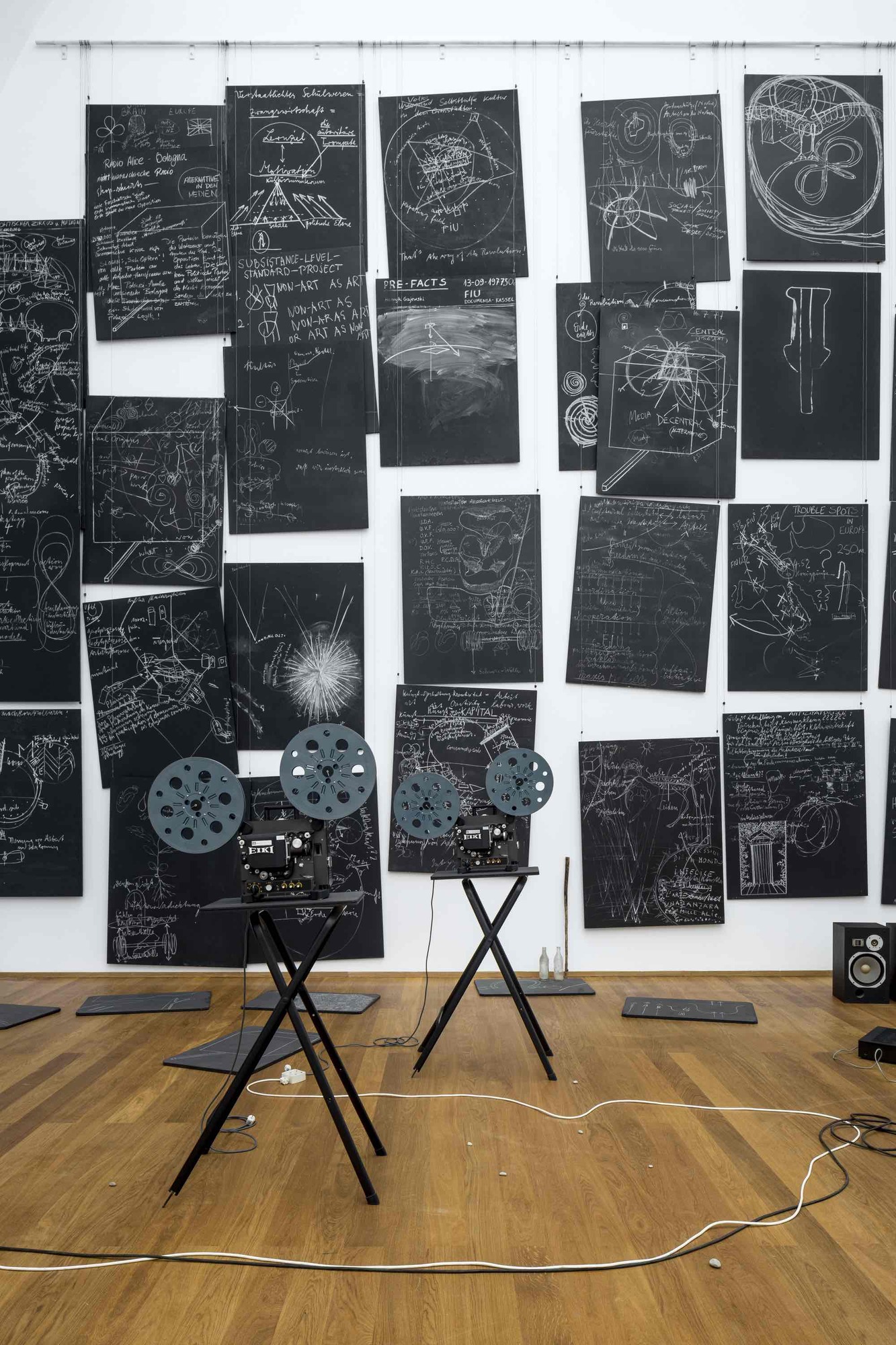
Exhibition view “Joseph Beuys. Works from the collection of the Nationalgalerie", Hamburger Bahnhof - Nationalgalerie der Aktuell, from April 12, 2024 / pictured: Joseph Beuys, Das Kapital Raum 1970–1977 (1980), wooden panels inscribed with chalk, 50 pieces, zinc tub with water, soap , towels, gelatin, electronic players and cables, wooden slats, spear, axe, knife, pebbles, grand piano, flashlights, projection screen, dimensions variable, State Museums in Berlin, National Gallery, Marx Collection (property of the Prussian Cultural Heritage Foundation), photo: Jacopo La Forgia© VG Bild-Kunst, Bonn 2024
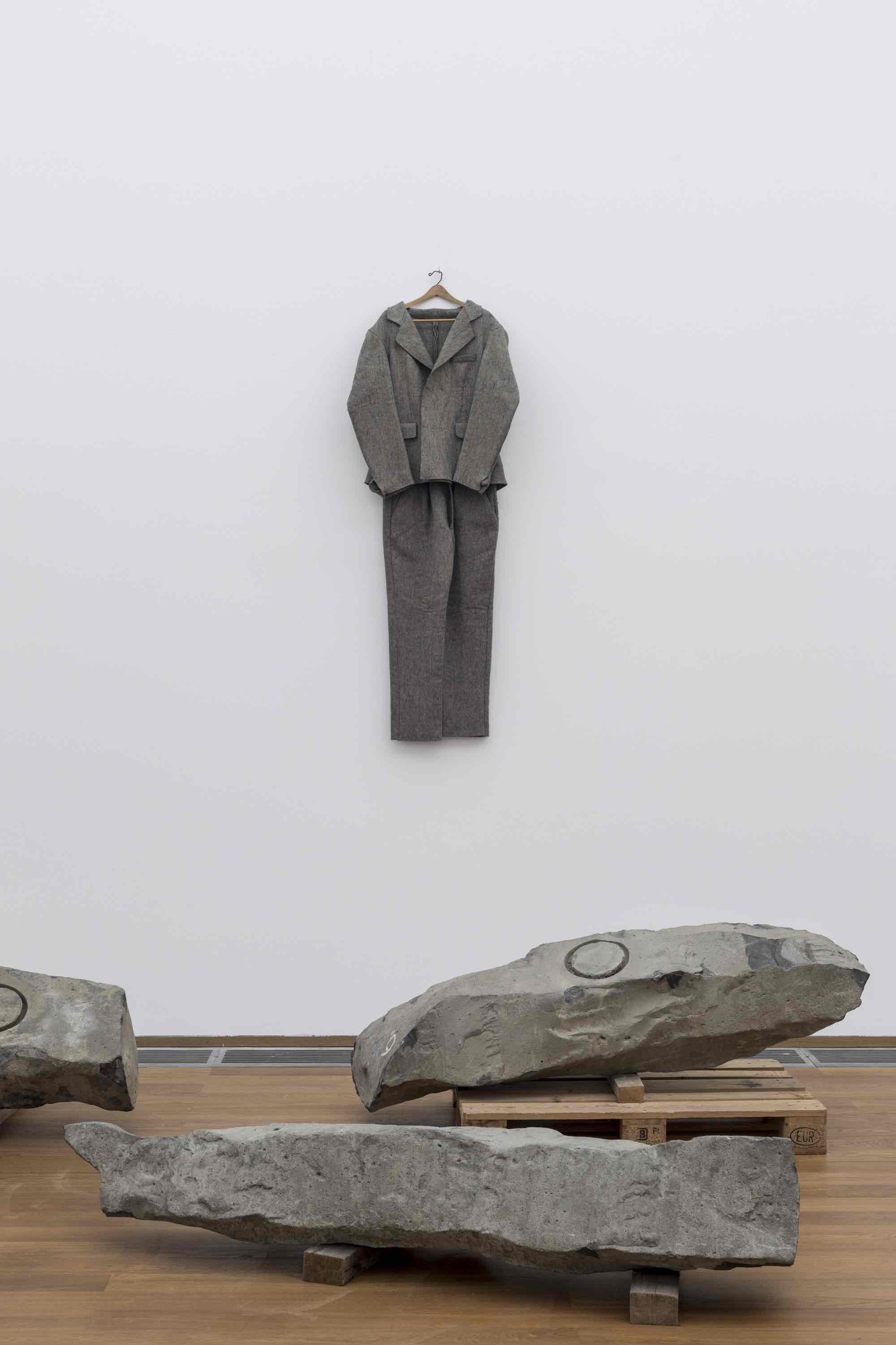
Exhibition view “Joseph Beuys. Works from the collection of the Nationalgalerie", Hamburger Bahnhof - Nationalgalerie der Aktuell, from April 12, 2024 © VG Bild-Kunst Bonn, 2024 / Nationalgalerie - Staatlichemuseums zu Berlin / Jacopo La Forgia
Hamburger Bahnhof presents its extensive holdings of works by artist Joseph Beuys (1921–86) in the Kleihueshalle, reopening on this occasion. The exhibition will include major pieces from the Nationalgalerie’s collection, such as THE END OF THE 20TH CENTURY (1982), alongside Tram Stop. A monument to the future (1976) and DAS KAPITAL RAUM, 1970–1977 (1980), which both recently entered the collection thanks to the generous donation of the family of collector Erich Marx, who died in 2020. Visitors can explore the complex oeuvre and critical reception of the artist Beuys in a presentation comprising 15 works and a multimedia study island.
Joseph Beuys (1921–1986) was a draftsman, sculptor, action and installation artist, teacher, politician and activist. Having grown up under National Socialism in Germany, and actively participated in the Hitler Youth and the armed forces, Beuys sought to transform the totalitarian society of his youth into one of warmth and radical democracy: by means of art, and in conversation and cooperation with all people. Beuys called the collective transformation of society he envisaged “social sculpture.” By that, he meant an expanded form of art, in which all human beings – as the artists they innately are – could and should participate. Comprising 15 works, the collection presentation brings together for the first time in one space Tram Stop. A monument to the future (1976), DAS KAPITAL RAUM, 1970–1977 (1980) and THE END OF THE 20TH CENTURY (1982) from the Nationalgalerie Collection. The study island offers visitors an insight into the ambivalent perception of the artist through audio contributions by wellknown personalities and selected books and confronts his vision of social renewal with the civil rights activist Angela Davis, the writer Ursula Le Guin or the poet Kae Tempest, among others.
In addition to sculptures, environments, drawings and multiples the exhibition also includes groundbreaking actions such as how to explain pictures to a dead hare (1964), Transsiberian Rail (1970) and I like America and America likes Me. In these works, Beuys developed and illustrated his idea of how everyone could actively contribute to the democratization of society as an artist. From 1963 onwards, he performed over thirty actions in various roles, among them a shaman, teacher, gangster or gardener. Beuys used materials such as felt, fat and copper, to which he attributed certain properties within his work. The Felt Suit (1970), for example, is made of a material that Beuys valued for its warming, insulating qualities. He also developed theories, as the Projekt Westmensch notebooks in the exhibition illustrate. From electromagnetism to quantum physics, he intensively investigated the properties of energy. Energy-generating and energy-conducting processes played a central role in the development of his Theory of Social Sculpture, which he also referred to as the Energy Plan. The Energy Staff (1974) and Capri Battery (1985) attest to this in the exhibition.
The presentation probes the ways in which Beuys’s work questioned the nature, materiality, language and perception of the boundaries and tasks of art. He incorporated myths about himself into his work, actively integrated the public into his art in the spirit of social sculpture and ultimately moved outside the museum world. The model for Tram Stop. A monument to the future (1976) was a peace memorial made of decommissioned weapons and a railway track from Beuys’s hometown of Kleve. DAS KAPITAL RAUM, 1970–1977 (1980) refers to Das Kapital by Karl Marx (1867), although Beuys equates capital with human creativity. The installation consists of objects from actions from 1970 to 1977. The blackboards with chalk drawings were created as part of the Organisation for Direct Democracy through Referendum at documenta 5 (1972) and the Free International University at documenta 6 (1977). Here the artist and the public spent 100 days discussing politics, society and the economy. THE END OF THE 20TH CENTURY was created after 7000 Oaks for documenta 7 (1982) and also incorporates basalt steles. With this largescale ecological sculpture in Kassel, in the realization of which thousands of people took part, Beuys left the conventional art space.
The Felt Suit (1970) already testifies to Beuys’s tendency to situate himself at the center of his artistic-political movement. The portrait by Andy Warhol from 1980 depicts Beuys as an icon of popular culture. Beuys was presumably aware of the advertising potential of Warhol's portrait. In 1981, he claimed that his entire life was advertising: for the renewal of society through creativity.
The exhibition aims to actively involve the public. New voices on the subject of transformation and social renewal will be added to the study island every three months. Visitors are invited to enter suggestions in a notebook.
In addition to free guided tours on Sundays, which offer participants a basic overview of the artist's issues and themes, the education and outreach program also includes new guided tours that can be booked individually. Schools have the opportunity to book exhibition talks on Beuys’s work, which deal with topics such as ecology, environmental protection and sustainability. The program also includes a range of workshops on political, sociocritical and utopian art. These interactive discussions offer high school students the opportunity to view and discuss Beuys’s art in the context of contemporary artistic positions shown at the museum. A school project with the Erika Mann primary school will create a program for beuysradio based on an intensive examination of his work.
In 2022, the family of the well-known Berlin collector Erich Marx, who died in 2020, donated the entire holdings of works by the artist Joseph Beuys from the Marx Collection to the Prussian Cultural Heritage Foundation. The donation included the following works, which are now in the collection of the Nationalgalerie: The secret block for a secret person in Ireland (1936–76); STELLE, 2nd Version (1967–76); Energy Staff (1974); Tram Stop, 2nd Version (1961–76); Untitled (Blackboard) (1977); Untitled (ART = CAPITAL) (1980); Untitled (Neutralied CapitaI) (1980); DAS KAPITAL RAUM 1970–1977 (1980). Of these works, the following can be seen in the new collection presentation: Energy Staff (1974); Tram Stop, 2nd Version (1961–76); and DAS KAPITAL RAUM 1970–1977 (1980).
The new permanent display is being held to mark the generous donation of works from the family of the collector Erich Marx. It will be accompanied by a rotating series of solo exhibitions featuring the work of contemporary artists – the first of whom will be Naama Tsabar with Estuaries (until 22.9.2024, curated by Ingrid Buschmann). From 8 November 2024, Andrea Pichl will follow with Wertewirtschaft (Values Economy, until 4.5.2025, curated by Sven Beckstette).
Joseph Beuys. Works from the Nationagalerie Collection is curated by Catherine Nichols, curator at Hamburger Bahnhof – Nationalgalerie der Gegenwart
Joseph Beuys (1921–1986) was a draftsman, sculptor, action and installation artist, teacher, politician and activist. Having grown up under National Socialism in Germany, and actively participated in the Hitler Youth and the armed forces, Beuys sought to transform the totalitarian society of his youth into one of warmth and radical democracy: by means of art, and in conversation and cooperation with all people. Beuys called the collective transformation of society he envisaged “social sculpture.” By that, he meant an expanded form of art, in which all human beings – as the artists they innately are – could and should participate. Comprising 15 works, the collection presentation brings together for the first time in one space Tram Stop. A monument to the future (1976), DAS KAPITAL RAUM, 1970–1977 (1980) and THE END OF THE 20TH CENTURY (1982) from the Nationalgalerie Collection. The study island offers visitors an insight into the ambivalent perception of the artist through audio contributions by wellknown personalities and selected books and confronts his vision of social renewal with the civil rights activist Angela Davis, the writer Ursula Le Guin or the poet Kae Tempest, among others.
In addition to sculptures, environments, drawings and multiples the exhibition also includes groundbreaking actions such as how to explain pictures to a dead hare (1964), Transsiberian Rail (1970) and I like America and America likes Me. In these works, Beuys developed and illustrated his idea of how everyone could actively contribute to the democratization of society as an artist. From 1963 onwards, he performed over thirty actions in various roles, among them a shaman, teacher, gangster or gardener. Beuys used materials such as felt, fat and copper, to which he attributed certain properties within his work. The Felt Suit (1970), for example, is made of a material that Beuys valued for its warming, insulating qualities. He also developed theories, as the Projekt Westmensch notebooks in the exhibition illustrate. From electromagnetism to quantum physics, he intensively investigated the properties of energy. Energy-generating and energy-conducting processes played a central role in the development of his Theory of Social Sculpture, which he also referred to as the Energy Plan. The Energy Staff (1974) and Capri Battery (1985) attest to this in the exhibition.
The presentation probes the ways in which Beuys’s work questioned the nature, materiality, language and perception of the boundaries and tasks of art. He incorporated myths about himself into his work, actively integrated the public into his art in the spirit of social sculpture and ultimately moved outside the museum world. The model for Tram Stop. A monument to the future (1976) was a peace memorial made of decommissioned weapons and a railway track from Beuys’s hometown of Kleve. DAS KAPITAL RAUM, 1970–1977 (1980) refers to Das Kapital by Karl Marx (1867), although Beuys equates capital with human creativity. The installation consists of objects from actions from 1970 to 1977. The blackboards with chalk drawings were created as part of the Organisation for Direct Democracy through Referendum at documenta 5 (1972) and the Free International University at documenta 6 (1977). Here the artist and the public spent 100 days discussing politics, society and the economy. THE END OF THE 20TH CENTURY was created after 7000 Oaks for documenta 7 (1982) and also incorporates basalt steles. With this largescale ecological sculpture in Kassel, in the realization of which thousands of people took part, Beuys left the conventional art space.
The Felt Suit (1970) already testifies to Beuys’s tendency to situate himself at the center of his artistic-political movement. The portrait by Andy Warhol from 1980 depicts Beuys as an icon of popular culture. Beuys was presumably aware of the advertising potential of Warhol's portrait. In 1981, he claimed that his entire life was advertising: for the renewal of society through creativity.
The exhibition aims to actively involve the public. New voices on the subject of transformation and social renewal will be added to the study island every three months. Visitors are invited to enter suggestions in a notebook.
In addition to free guided tours on Sundays, which offer participants a basic overview of the artist's issues and themes, the education and outreach program also includes new guided tours that can be booked individually. Schools have the opportunity to book exhibition talks on Beuys’s work, which deal with topics such as ecology, environmental protection and sustainability. The program also includes a range of workshops on political, sociocritical and utopian art. These interactive discussions offer high school students the opportunity to view and discuss Beuys’s art in the context of contemporary artistic positions shown at the museum. A school project with the Erika Mann primary school will create a program for beuysradio based on an intensive examination of his work.
In 2022, the family of the well-known Berlin collector Erich Marx, who died in 2020, donated the entire holdings of works by the artist Joseph Beuys from the Marx Collection to the Prussian Cultural Heritage Foundation. The donation included the following works, which are now in the collection of the Nationalgalerie: The secret block for a secret person in Ireland (1936–76); STELLE, 2nd Version (1967–76); Energy Staff (1974); Tram Stop, 2nd Version (1961–76); Untitled (Blackboard) (1977); Untitled (ART = CAPITAL) (1980); Untitled (Neutralied CapitaI) (1980); DAS KAPITAL RAUM 1970–1977 (1980). Of these works, the following can be seen in the new collection presentation: Energy Staff (1974); Tram Stop, 2nd Version (1961–76); and DAS KAPITAL RAUM 1970–1977 (1980).
The new permanent display is being held to mark the generous donation of works from the family of the collector Erich Marx. It will be accompanied by a rotating series of solo exhibitions featuring the work of contemporary artists – the first of whom will be Naama Tsabar with Estuaries (until 22.9.2024, curated by Ingrid Buschmann). From 8 November 2024, Andrea Pichl will follow with Wertewirtschaft (Values Economy, until 4.5.2025, curated by Sven Beckstette).
Joseph Beuys. Works from the Nationagalerie Collection is curated by Catherine Nichols, curator at Hamburger Bahnhof – Nationalgalerie der Gegenwart
